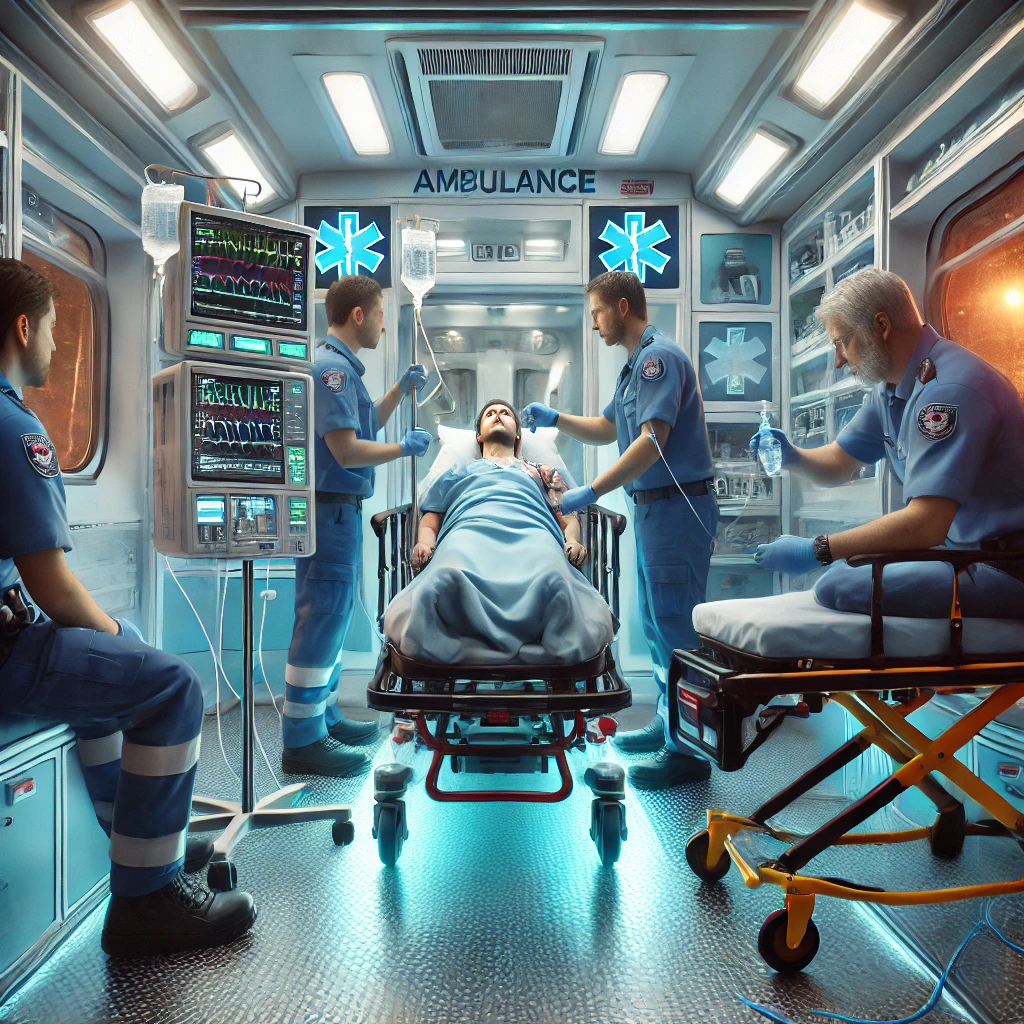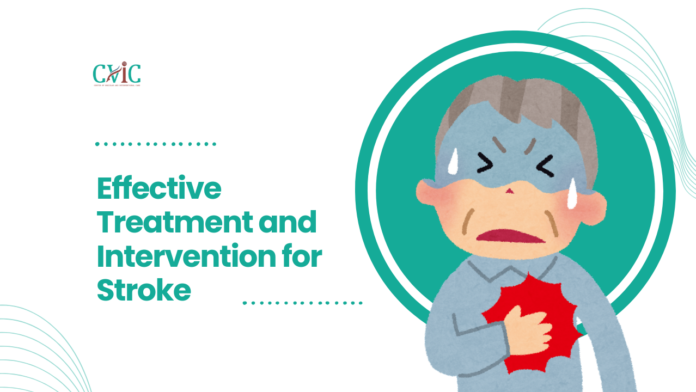Stroke is a medical emergency that requires immediate attention. Effective treatment and intervention for stroke can make a life-saving difference, minimizing damage to the brain and improving the chances of recovery. In this blog, we’ll explore the types of strokes, early warning signs, cutting-edge treatments, and essential recovery strategies to provide a complete understanding of this critical topic.
Understanding Stroke: Types and Causes
A stroke occurs when blood flow to a part of the brain is disrupted, leading to potential damage or death of brain cells. It is essential to understand the two main types of strokes:
Ischemic Stroke
- Caused by blood clots or other obstructions in the blood vessels.
- Accounts for approximately 87% of all strokes.
- Often related to atherosclerosis or high cholesterol levels.

Also Read: What is Gangrene, and How Does it Occur?
Hemorrhagic Stroke
- Results from a ruptured blood vessel, leading to bleeding in the brain.
- Commonly associated with high blood pressure or aneurysms.
Transient Ischemic Attack (TIA)
- Also known as a “mini-stroke.”
- Temporary blockage of blood flow with no permanent damage.
- An early warning sign of a potential major stroke.
Early Warning Signs of Stroke
Timely recognition of stroke symptoms is key to effective treatment and intervention for stroke. The acronym FAST can help identify these signs:
- Face drooping: Sudden asymmetry in the face.
- Arm weakness: Inability to raise one or both arms.
- Speech difficulty: Slurred or incoherent speech.
- Time to call emergency services: Act immediately if these symptoms appear.
Other symptoms may include:
- Sudden confusion.
- Trouble seeing in one or both eyes.
- Loss of balance or coordination.

Treatment and Intervention for Stroke
Emergency Treatments
Immediate action is crucial in reducing the long-term impact of a stroke.
- Thrombolytic Therapy: Use of clot-busting drugs like tissue plasminogen activator (tPA) to dissolve blood clots in ischemic stroke.
- Endovascular Procedures: Mechanical removal of clots using stent retrievers for severe blockages.
- Surgical Intervention: Procedures like craniotomy to relieve pressure in hemorrhagic strokes.
Medical Management
- Blood Pressure Control: Critical for preventing additional damage.
- Anticoagulants and Antiplatelets: Medications to prevent clot formation.
- Cholesterol-Lowering Drugs: Helps manage plaque buildup in blood vessels.
Rehabilitation and Recovery
Rehabilitation is a vital part of treatment and intervention for stroke. It focuses on restoring lost abilities and adapting to new challenges.
- Physical Therapy: Improves mobility, balance, and strength.
- Speech Therapy: Helps recover communication skills.
- Occupational Therapy: Rebuilds the ability to perform daily activities.
Lifestyle Modifications to Prevent Stroke
Prevention is better than cure, and adopting a healthier lifestyle can reduce the risk of strokes significantly.
- Dietary Changes: Opt for a diet rich in fruits, vegetables, lean protein, and whole grains.
- Exercise: Engage in regular physical activity to maintain a healthy weight and improve cardiovascular health.
- Smoking Cessation: Smoking damages blood vessels and increases stroke risk.
- Stress Management: Practice mindfulness or yoga to reduce stress levels.
Also Read: Are There Any Risks Associated with Varicose Veins Treatments?

Innovations in Stroke Treatment
AI-Powered Diagnostics
Advanced imaging and AI algorithms are revolutionizing the diagnosis of strokes, enabling faster treatment decisions.
Telemedicine in Stroke Care
Telehealth services allow rural patients to access specialized care through remote consultations.
Regenerative Medicine
Stem cell therapies are being researched for their potential to repair brain damage post-stroke.
FAQs
What is the most effective treatment for ischemic stroke?
The administration of tPA within the first 3-4.5 hours of symptom onset is the most effective treatment for ischemic stroke.
Can stroke be completely cured?
While complete recovery is possible in some cases, it depends on the severity and timing of treatment. Rehabilitation plays a crucial role.
How can I reduce my stroke risk?
Maintain a healthy lifestyle, monitor blood pressure, and avoid smoking or excessive alcohol consumption.
What happens if a stroke is untreated?
Untreated strokes can lead to severe brain damage, disability, or death. Immediate medical attention is essential.
Is rehabilitation necessary for all stroke patients?
Yes, rehabilitation is essential for improving recovery outcomes and regaining lost abilities.
Are there any alternative therapies for stroke recovery?
Complementary therapies like acupuncture or meditation may support conventional treatments, but they should not replace standard care.
Conclusion
Effective treatment and intervention for stroke require a combination of swift medical action, ongoing therapy, and preventive measures. By staying informed and adopting a proactive approach, individuals can significantly improve outcomes and reduce the risk of future strokes. Remember, every second counts when it comes to stroke care—act fast, and don’t hesitate to seek professional help.




